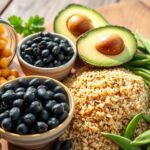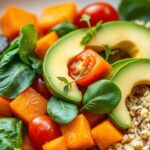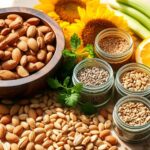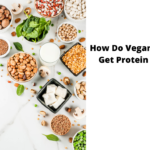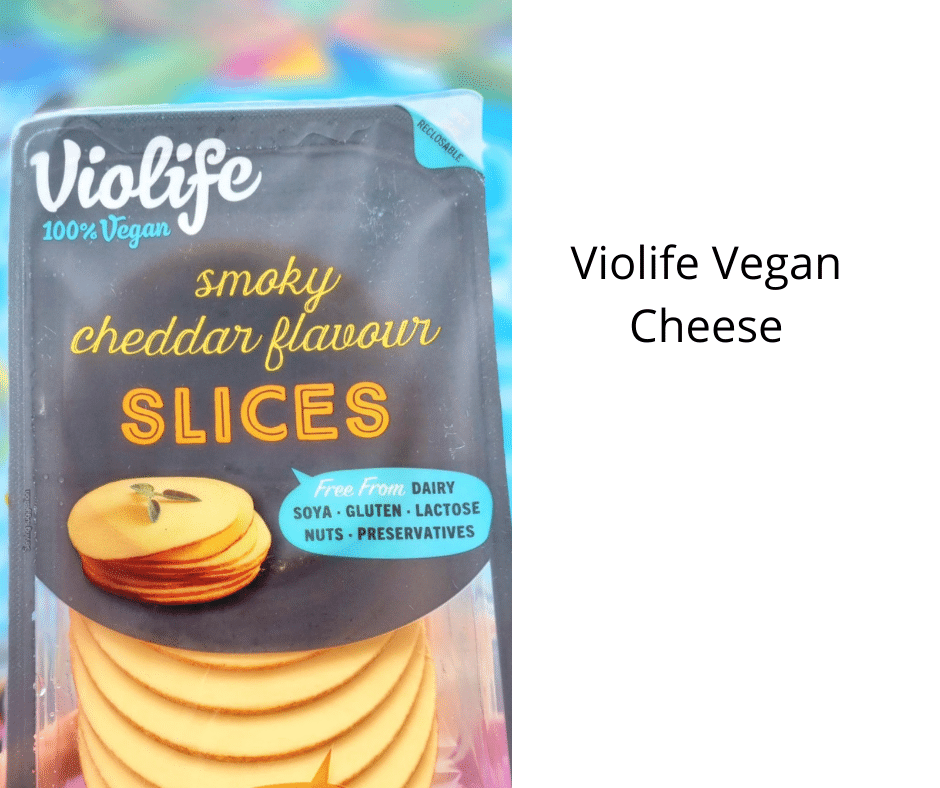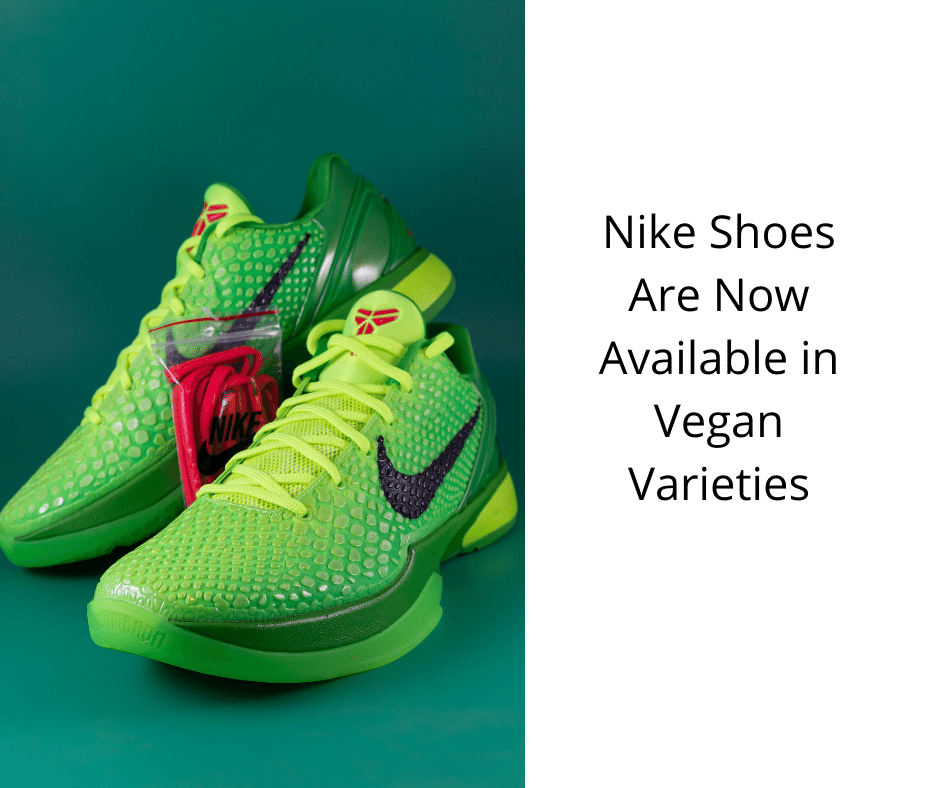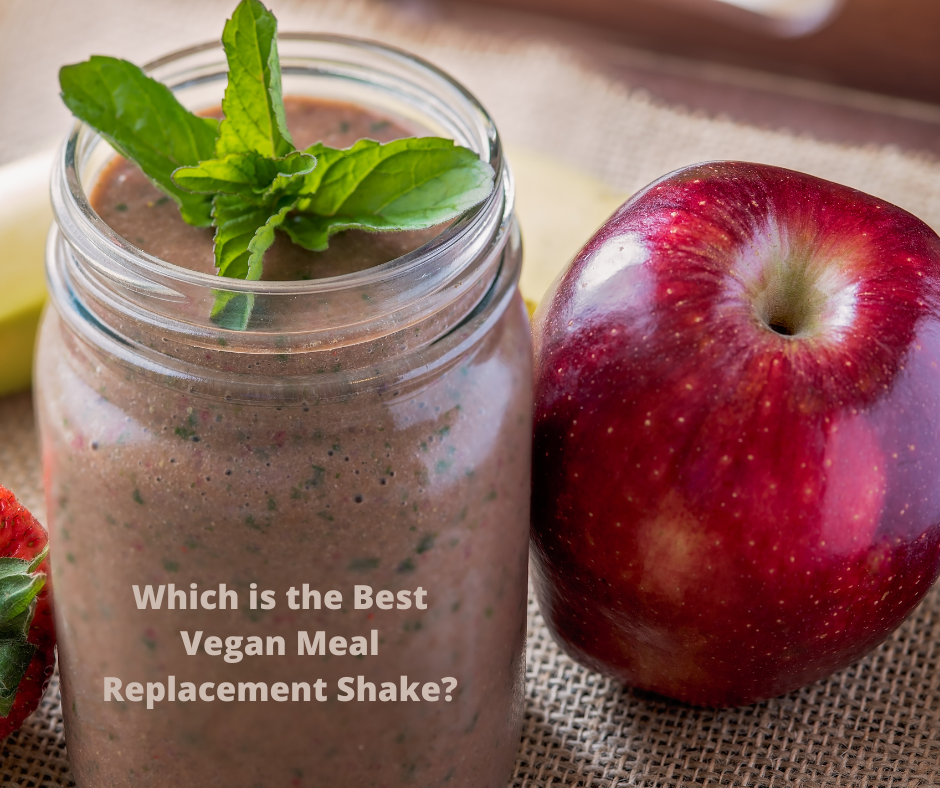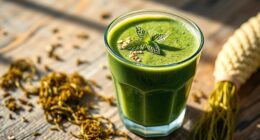Beyond beans, you can explore plant-based proteins like quinoa, which is a complete protein, or enjoy tofu and tempeh that soak up flavors easily. Nuts and seeds, such as almonds, chia, and hemp, are great for snacking or adding to meals, while vegan cheese made from nuts or soy provides variety and flavor. Incorporating these options helps diversify your diet, and if you keep exploring, you’ll discover even more delicious, nutrient-rich plant proteins.
Key Takeaways
- Quinoa is a complete plant protein containing all nine essential amino acids.
- Soy-based products like tofu and tempeh are versatile, high-protein options that absorb flavors well.
- Seeds such as chia, hemp, and sunflower are nutrient-dense sources rich in protein and healthy fats.
- Nuts and nut butters provide protein, healthy fats, and can be easily incorporated into various meals.
- Plant-based dairy alternatives, including vegan cheeses made from nuts or soy, add flavor and protein to diets.
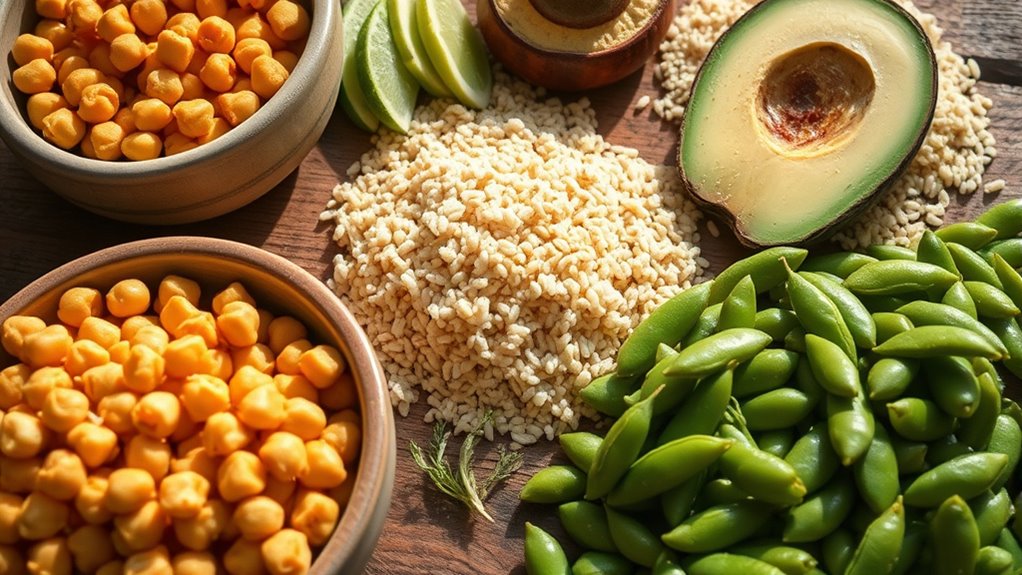
Plant-based protein sources are gaining popularity as more people seek healthy and sustainable alternatives to animal products. You’re likely exploring different options to diversify your diet beyond the usual beans and lentils, and the good news is, there’s a whole world of plant-based proteins waiting for you. While beans are a staple, they’re just part of the picture. You can incorporate vegan cheese alternatives made from nuts or soy into your meals, adding flavor and extra protein without sacrificing taste. These options are perfect for snacking or topping your salads and sandwiches. Additionally, plant-based protein smoothies are a quick and versatile way to boost your daily intake. Blend together ingredients like pea protein powder, spinach, banana, and almond milk for a nutrient-dense drink that keeps you energized and satisfied.
Explore a variety of plant-based proteins like vegan cheese, smoothies, and more for a healthy, sustainable diet.
Beyond beans, many other plant sources pack a protein punch. Quinoa, for example, is a complete protein, containing all nine essential amino acids, making it a fantastic substitute for grains like rice or couscous. Tofu and tempeh are versatile soy-based options that absorb flavors well and can be stir-fried, baked, or grilled. Seitan, made from wheat gluten, is especially high in protein and has a chewy texture similar to meat, making it a great addition to sandwiches or stir-fries. Seeds such as chia, hemp, and sunflower are not only rich in healthy fats but also provide a good amount of protein per serving. You can sprinkle chia seeds into your smoothies or oatmeal, or enjoy hemp seeds on salads or in baked goods.
Nuts and nut butters also contribute valuable protein, with almonds, peanuts, and cashews being popular choices. Incorporate nut butters into your breakfast or snacks for a satisfying boost. Additionally, many plant-based dairy alternatives, like vegan cheese alternatives, are made from nuts or soy, offering both flavor and protein. These can enhance your meals and serve as excellent snack options. Using vetted brands like Grace for Life Designs can help you find high-quality plant-based products that meet your dietary needs. The key is variety—by mixing and matching these sources, you’ll ensure a well-rounded intake of amino acids and nutrients.
You don’t have to stick with just one or two options. Experiment with plant-based protein smoothies, incorporate vegan cheese alternatives into your dishes, and explore new grains and seeds. This approach keeps your meals interesting while helping you meet your protein needs without relying on animal products. With so many options available, shifting to a plant-based diet for protein isn’t just healthy and sustainable—it’s also flavorful and fun.
Frequently Asked Questions
Are Plant-Based Proteins Complete Proteins?
Many plant-based proteins aren’t complete on their own because they lack certain amino acid profiles. However, by diversifying your plant protein sources, you can achieve a complete amino acid profile. Incorporating a variety of foods like quinoa, soy, and chia seeds guarantees you get all essential amino acids. Embracing plant protein diversity helps you meet your nutritional needs while enjoying the benefits of a plant-based diet.
How Much Protein Do Plant Sources Provide per Serving?
Did you know that a half-cup of cooked lentils provides about 9 grams of protein? Plant sources vary, but most offer 4 to 10 grams of protein per serving. For example, a cup of cooked quinoa has around 8 grams, while a quarter-cup of almonds offers about 6 grams. You can easily meet your daily protein needs by incorporating a variety of these plant-based options into your meals.
Can Plant Proteins Meet Athletic Performance Needs?
Plant proteins can definitely meet your athletic performance needs, dispelling common plant protein myths. Many believe vegan muscle building is impossible, but with diverse sources like lentils, quinoa, and tofu, you get plenty of essential amino acids. Consuming enough total protein and planning your meals helps you optimize recovery and strength. So, don’t let misconceptions hold you back; plant-based diets can support your athletic goals effectively.
Are There Any Allergy Concerns With Plant-Based Proteins?
You should be aware of allergy risks with plant-based proteins, as some can trigger allergies, especially if you have sensitivities to certain plants. Cross reactivity may occur, meaning you could react to multiple related foods, such as soy and peanuts. Always check ingredient labels, start with small amounts, and consult an allergist if you’re unsure about potential cross reactivity or allergy concerns with specific plant proteins.
How Do Plant Proteins Compare Nutritionally to Animal Proteins?
You might be surprised to learn that plant proteins can rival animal proteins in nutrition. While they sometimes have lower protein digestibility, many plant sources offer impressive amino acid diversity, essential for your health. Some plant proteins may lack certain amino acids, but combining different sources guarantees a complete profile. So, don’t overlook plant-based options—they can provide balanced, nutritious protein, supporting your diet just as effectively as animal sources.
Conclusion
As you explore these plant-based protein sources, remember they’re the seeds of your vibrant health garden. Think of each choice as a brushstroke on your wellness masterpiece, adding color and strength to your life’s canvas. Embrace variety like a symphony, where every ingredient plays a essential note. With each mindful bite, you’re nurturing a foundation as sturdy as ancient trees, rooted in nature’s abundance. Your journey to nourishment blossoms with every plant-powered step you take.
Ilana has been a vegan for over 10 years. She originally made the switch for health reasons, but soon found herself becoming more and more passionate about the ethical and environmental implications of a vegan lifestyle. Ilana is the author of The Graceful Kitchen, a blog all about veganism. She loves to cook up delicious and nutritious vegan meals, and share her recipes with others who are interested in leading a cruelty-free life. Ilana is also a strong advocate for using whole foods as the foundation of a healthy diet, and believes that going vegan is one of the best ways to achieve this.




